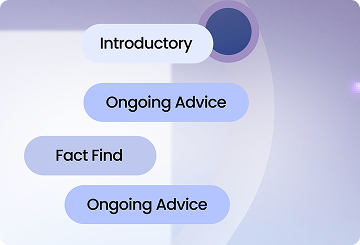Updated November 2025
Quality assurance shapes how firms understand customer outcomes. Yet many teams still rely on assumptions that do not hold up in day-to-day operations. These assumptions slow monitoring and hide early signs of risk. They also weaken the evidence firms need for Consumer Duty. The challenge spans banking, insurance and wealth: high volumes of activity, many customer interactions and limited visibility of the real experience. This piece sets out the assumptions that cause these gaps and shows the practical impact on compliance, operations and customer experience.
Complaints alone do not show the full picture
Complaints offer useful insight, but they make up only a small part of total customer interactions. When firms rely only on formal complaints, they miss people who raise concerns informally but never follow the full process.
The business impact: Under Consumer Duty, the FCA requires firms to demonstrate understanding of customer outcomes across all interactions, not just formal complaints. Tracking only formal complaints means you lack visibility into deteriorating client relationships. When dissatisfaction goes untracked, you miss early warning signals.
For insurance firms, this could mean missing early indicators of claims handling frustration before it escalates to formal complaints or Ombudsman referrals. In banking, it might be customers expressing concerns about overdraft charges or product suitability during service calls that never become formal complaints. By the time someone complains formally, they’ve often already shared their frustration with others, damaging your referral pipeline and Net Promoter Score.
Monitoring complaints and expressions of dissatisfaction over time and at scale, then linking this data to business activities, provides valuable insights and meaningful trends. This gives companies a better understanding of how changes affect customer satisfaction. For example, if a change in communication leads to increased customer dissatisfaction, businesses can use this information to refine their approach and improve customer outcomes.
→ Learn how AI monitoring achieves 100% coverage of customer interactions for Consumer Duty compliance
QA extends far beyond regulatory compliance
QA is often viewed as a tick-box exercise for regulatory compliance. This narrow view overlooks the potential of QA to drive innovation and improve customer experience.
The business impact: Treating QA purely as a compliance exercise wastes resources. Your firm already invests time and budget in QA. Limiting its scope to regulatory overhead means leaving value on the table.
For banks, the same data used for conduct risk monitoring could reveal why certain branches have higher account closure rates or why specific product features confuse customers. Insurance firms could identify patterns in policy cancellations or understand which communication approaches lead to better claims experiences. Wealth management firms could spot why advisers lose clients at review meetings or why certain products generate more queries than others.
QA can become the central nervous system of your organisation. When used properly, it serves as the single source of actionable data across the business, improving training, marketing, sales, customer experience and product development. QA teams should look beyond compliance to identify areas for improvement in coaching, sales strategies and product features.
Proactive QA prevents problems before they scale
QA is often treated as a reactive function, focused on detecting and correcting errors after they occur.
The business impact: Reactive QA means fixing problems after they’ve already cost you money. A single mis-sold product or unsuitable recommendation discovered months later triggers remediation costs, regulatory scrutiny and reputational damage. Proactive QA catches these patterns early, before they affect dozens of clients.
In banking, this means identifying potential affordability concerns or unsuitable lending before they become conduct issues. For insurance firms, it means spotting problematic sales practices or claims handling approaches before they affect multiple customers. In wealth management, it enables early detection of suitability gaps or vulnerable customer situations.
QA can also drive continuous improvement and innovation. By analysing customer interactions and identifying areas for improvement, QA teams help the business maintain high standards and deliver better customer experiences. Early identification of customers whose circumstances have changed means firms can adjust product recommendations sooner. Similarly, spotting vulnerable customers earlier leads to better support and improved outcomes across all sectors.
→ Discover how Auto QA addresses the 10 biggest compliance challenges in financial services
Ongoing monitoring is now mandatory
Another common assumption is that QA is a one-time process, focused on auditing products and services at a specific point in time.
The business impact: The FCA’s Consumer Duty enforcement makes ongoing monitoring mandatory. Firms relying on annual or quarterly snapshots cannot demonstrate they’ve taken ‘prompt action’ when outcomes deteriorate. Discovering falling satisfaction six months after it began creates a difficult regulatory conversation. The FCA handed out fines totalling £176 million in 2024, tripling from previous years.
This applies across all sectors. Banks must monitor current account and lending products throughout their lifecycle. Insurance firms need continuous oversight of policy performance and claims outcomes. Wealth management firms must track ongoing advice relationships and portfolio suitability as customer circumstances evolve.
Customer expectations and market trends change continuously. Ongoing monitoring is a Consumer Duty requirement. The FCA expects customer satisfaction to be monitored throughout the lifetime of a product or service so firms can take remedial action as soon as an issue occurs. With changing regulatory expectations, firms must structure QA as an ongoing monitoring and continuous improvement process to ensure products and services remain compliant and meet customer needs for the long term.
Smart automation still needs human oversight
Automation can streamline QA processes and reduce costs, but it requires careful implementation.
The business impact: Over-automating QA creates blind spots in complex scenarios where context matters. A banking conversation about financial difficulty requires different assessment than a straightforward transaction query. Insurance claims discussions involving bereavement or serious illness need human understanding of emotional context. Wealth management advice conversations contain nuances that automated systems might miss.
Under-automating means teams drown in administrative work instead of focusing on high-risk cases. Firms that get this balance wrong either face regulatory issues from missed nuances or operational inefficiency from manual overload. A typical 500-adviser firm can save approximately £450,000 annually in compliance costs while achieving superior regulatory outcomes when automation is properly implemented.
Technology continues to evolve, helping teams automate time-consuming administrative tasks. However, important decisions and advice require a human-plus approach. QA teams need to strike a balance between automation and human input to ensure the best possible outcomes.
→ See how firms achieve 75% reduction in manual QA time with 100% monitoring coverage
Modern QA prioritises high-value work over administrative burden
A common misconception suggests QA processes must be bureaucratic and slow.
The business impact: When QA teams spend days manually reviewing calls for basic compliance points, they cannot dedicate time to spotting emerging risks or identifying training opportunities. If your QA analysts spend 80% of their time on tasks technology could handle, you’re paying premium salaries for work that doesn’t require their expertise. Leading firms now reduce QA processing time from 90 minutes to 15 minutes per case whilst improving oversight quality.
Some elements of the QA process are slow by necessity. An in-depth review of a high-risk case involving fraud in banking, a complex insurance claim dispute, or a vulnerable customer situation in wealth management may require pulling information from multiple systems. This thoroughness protects the business. However, many slow processes can be accelerated with technology. Efficient QA processes require a streamlined approach that focuses on key priorities and eliminates unnecessary steps that do not add value. Modern QA tools and techniques that machine assess data strike this balance, enhancing overall efficiency without sacrificing rigour.
QA applies across all financial services sectors
QA matters for all areas of the financial services industry, given the importance of regulatory compliance and customer experience.
The business impact: For wealth managers, every unmonitored client interaction represents a potential suitability failure waiting to emerge. For insurance firms, unreviewed claims calls could miss vulnerable customer indicators or poor claims handling that damages customer outcomes. Banks face risks in lending conversations, complaint handling and financial difficulty discussions that go unmonitored. The question centres on whether you can demonstrate to the FCA that you’re meeting monitoring obligations effectively.
QA should apply to any firm, particularly those with a retail element, in light of Consumer Duty expectations. At minimum, firms should record calls in case they need to review them later. Banks can analyse calls to monitor affordability assessments and vulnerable customer support. Insurance firms can review sales and claims interactions for Consumer Duty compliance. Wealth and advice firms can monitor calls for market abuse, training and development purposes, or general adherence to company policies and procedures.
→ Explore how financial services firms are implementing AI-powered QA for Consumer Duty compliance
Moving forward
Challenging these assumptions gives firms a clearer view of what is happening in their customer interactions and where risk is building. Modern QA is continuous, structured and rooted in real evidence, helping teams act earlier and support customers more effectively. Firms that strengthen their approach now will be better placed to meet regulatory expectations and improve outcomes across every stage of the customer journey.
Strengthen your compliance ahead of 2026 → Schedule a demo with our team
Key Takeaways
-
Traditional QA models in financial services rely on small samples and keyword triggers. This creates inconsistent coverage and makes it easy to miss early signs of dissatisfaction or vulnerability.
-
AI-enhanced QA supports review teams by analysing the full conversation, including tone, phrasing and contextual cues that keyword tools overlook.
-
Continuous oversight across all interactions creates clearer and more reliable evidence for Consumer Duty and day-to-day supervision.
-
Human judgement remains essential. AI improves prioritisation, reduces noise and helps reviewers focus on the interactions that matter most.
-
Firms that adopt AI-supported QA gain a more dependable understanding of customer needs and a stronger position for meeting regulatory expectations.
Frequently Asked Questions
Why are keyword-based QA tools limited in financial services?
Keyword tools depend on specific words or phrases. Customers often express stress, uncertainty or dissatisfaction indirectly. This means many important signals never trigger an alert, while other alerts trigger unnecessarily and add noise for reviewers.
What can AI-enhanced QA identify that keyword tools miss?
AI models assess the full flow of the conversation. They consider tone, hesitation, context and domain-specific language. This helps them recognise early signs of concern that do not include explicit keywords.
Does AI-enhanced QA replace human reviewers?
No. AI supports human reviewers by highlighting interactions that may require attention. Reviewers still make the final judgement and interpret context.
How does AI support regulatory expectations?
AI creates a more complete and consistent evidence base. Firms can demonstrate how they identify emerging issues, support customers and assess outcomes across the full customer journey.
What should firms consider before adopting AI-enhanced QA?
Firms need clear governance, validation and a defined review process. AI must be monitored and assessed regularly to ensure it performs reliably.
Comparison Table: Old QA Model and AI-Enhanced QA Model
| Area | Traditional QA Model | AI-Enhanced QA Model |
|---|---|---|
| Coverage | Limited. A small sample of interactions is reviewed. | Broad. Most or all interactions can be analysed. |
| Signals captured | Explicit words and scripted triggers. | Tone, phrasing, intent and domain-specific context. |
| Missed issues | High risk of missing early signs of dissatisfaction or vulnerability. | Lower risk due to deeper analysis across the full conversation. |
| Reviewer workload | High and inconsistent. Many interactions are never reviewed. | Prioritised and streamlined. Reviewers focus on cases that need attention. |
| Evidence quality | Sparse and uneven. Limited to sampled cases. | Consistent and complete. Full transcripts, analysis and assessments in one place. |
| Regulatory fit | Difficult to demonstrate consistent outcomes. | Strong alignment with expectations for clarity, fairness and vulnerability management. |
| Scalability | Resource-intensive as call volumes grow. | Scales as volume increases without reducing quality. |






